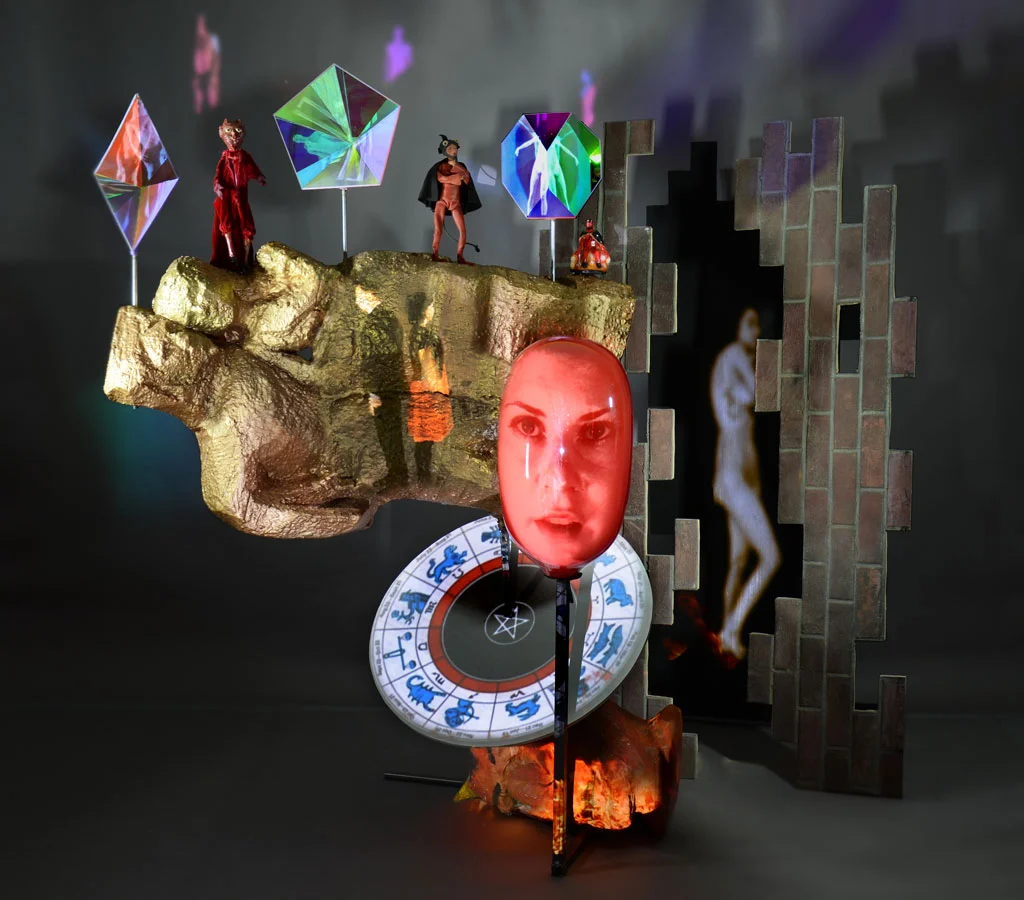Red Devil
July. 30 - Aug. 30, 1997
Oursler's variations on electronically animated effigies, or "dolls and dummies" as they are sometimes known, began in the 90s and allowed him to explore a relationship of constantly shifting hierarchy between text, performer, installation, and viewer. Within this huge project there are numerous overlapping categories of investigation: lingual, sub-lingual, psychological and cinematic.
Inspired by vernacular figurative work from outside the art history canon, such as scarecrows, voodoo dolls and political effigies, these figures suggest a do-it-yourself level of craft, and are hand sewn, sometimes including second-hand clothes. The body morphology is intentionally approximate and is completed by a white cloth screen of appropriate size and shape onto which a face is projected. The performances range in delivery and content from deadpan to emotionally charged, and are designed to engage the viewer in numerous modes. Oursler interrupts any emotive response to these situations by revealing the mechanical apparatus of the projectors and the materials of the simple, hand-made figures, while the language provokes the distancing effect that Brecht called the V-Effekt. Illusory fields are constructed and deconstructed, allowing a wider understanding of the implications of the works. Many of these figures stand alone, but dummies and dolls, speaking or not, became key elements within larger installations such as Anne/Dais, System for Dramatic Feedback, Sonic Basement and Private.
The artist's interest in the face as the locus of communication and meaning through oration, sound and expression is central to these works. They appear first as solitary figures and later in combination with sculptural and found objects, like suitcases, mattresses and furniture. The figures range in scale from a few inches high to well over human scale. A number of singular, diminutive figural projections question the significance of scale in relation to self-image. Impossibly small adult entities scream or cry endlessly, causing the viewer to investigate their empathetic responses. These works, which Oursler refers to as "sub-lingual", adopt a reductive approach to emotional states, isolated in performances often delivered by long-time collaborator Tracy Leipold. The recordings sometimes lasted for 45-60 minutes and focused on one or more mental states: crying, horror, orgasm, hysteria, laughter and anger. While these works are marked by non- linguistic, aural communication and the absence of spoken language, Oursler and Leipold embarked at the same time on a series of works involving glossolalia, or the trance- like, spontaneous invention of language often associated with of speaking in tongues. Other scripts are rich in language and often take the form of empathy tests and psychology tests in which the viewer is the subject.
Oursler produced a sub-series of works involving the vocalization of internal voices and utterances, such as Getaway, along with the cacophonous, conflicting and competing internalized selves given expression in Flock. At times the audience is implicated in the action through direct address. The installation may threaten or chide the viewer with invectives: "Get away from me!" forcing a move from the contemplative aesthetics of art- viewing to direct involvement in a psychodrama, thus creating the possibility for new perspectives and analytical engagement.
Another important series for Oursler links two key themes within his work: psychology and moving-image technology. Telling Visions, Keep Going and Director are part of this series, with figures that deliver omniscient, megalomaniacal scripts involving word-building activities, ambiguous juxtaposition, widely shifting points of view, camera positioning, editing, landscape, settings, hallucinations, effects, relationships, plot and characters. One is never quite sure whether this is all a delusional perspective or a cinematic event. The performer, distilled into a moving face on a deflated body, is the primary site of drama within these installations, a vestigial cinematic experience where escapist spectacle is inverted from trance to hypnosis. Rather than a passive party to narrative consumption, the viewer is always asked to place him or herself at the center of the psychic action, becoming part of the fantasy or production of a film event.
